Which is the best Doctor Who serial to feature the Daleks? We all have our favourites, but even the ones we, fans as a collective, pour scorn on have their fans. It renders any subjective list utterly pointless. Nonetheless, we love a good list (as opposed to a bad list), because they’re always oddly fascinating. They’re like a car-crash. It’s why media outlets like ranking Doctors, companions, serials, monsters, writers, showrunners, directors, and… well, just about everything.
And we’re doing it here, too, on the DWC. But in a different manner. We’re focusing on audience viewing figures because, while not necessarily a reflection of the quality of certain serials, they remain a subject of fascination. Which Dalek story was watched by the most people? It means some fantastic stories languish towards the bottom of the pile, while rubbish ones (again, subjectively speaking) are nearer the top. Which is which? We leave you to decide. We’re only dealing with facts.
Of course, we’ve had to impose rules on ourselves. Firstly, we have to quantify what counts as a Dalek story. There are obvious exemptions: The TV Movie (1996) only has those squeaky voices in; The War Games (1969) doesn’t give them a starring role; there’s only a very brief scene in The Waters of Mars; and no mini-episodes like The Last Day and the final Series 2 TARDISode count either.
The same is true of very brief appearances in, say, The Space Museum, The Five Doctors, The Pilot, Twice Upon A Time, and any other cameos you can think of. You won’t find those here – we’re sticking to stories where Daleks are the real threats, and, most importantly, a big draw for audiences.
So how do we count ratings? Single episodes are easy: we go by the BARB UK final figures, not counting iPlayer – unless BARB does – nor overseas ratings. For multiple-part stories, we’ve based the final figure on the average achieved across all the episodes within that serial’s bracket (so 1963/64’s The Daleks include The Dead Planet, The Survivors, The Escape, The Ambush, The Expedition, The Ordeal, and The Rescue). We’ve also listed the separate figures for each individual episode in broadcast order.
All figures are measured in millions.
We’re ignoring AI too because how they’re measured has changed substantially across Doctor Who‘s history.
So, without further ado, we give you… Every Dalek serial, ranked according to audience viewing figures!
1. Destiny of the Daleks: 13.47 million.
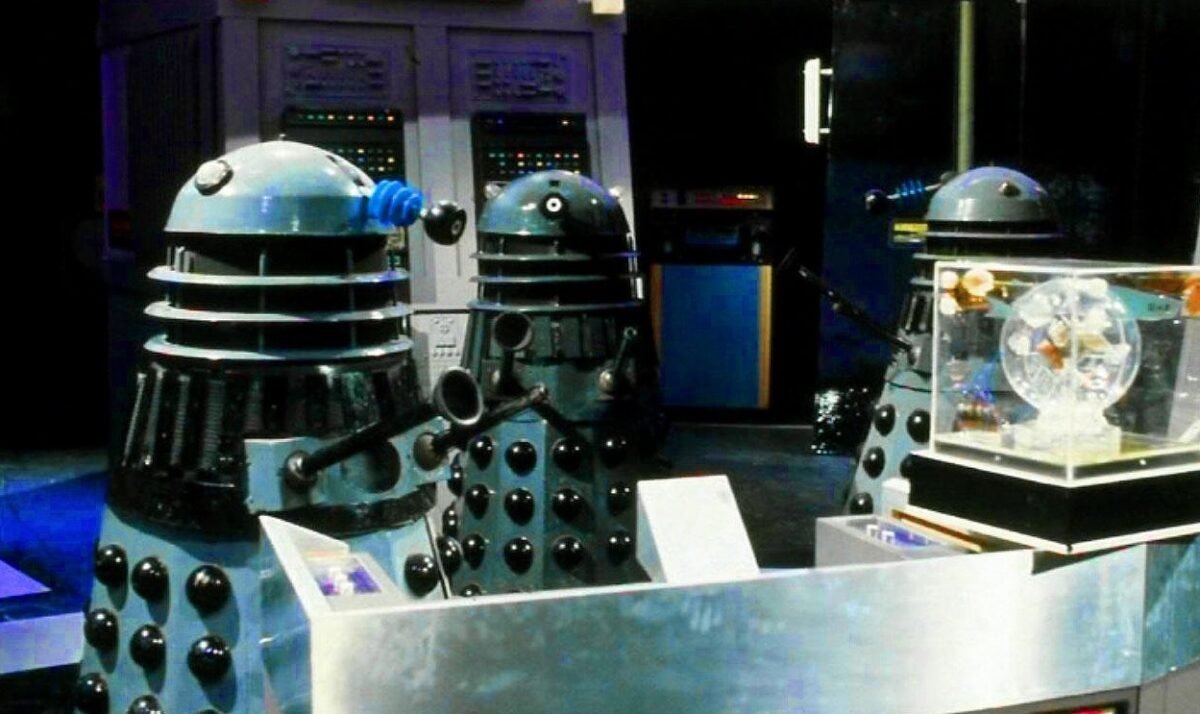
(13m/ 12.7m/ 13.8m/ 14.4m)
Doctor Who was riding high at the start of Season 17. Destiny of the Daleks Part 1’s 13 million was a huge leap on the previous season’s opening episode (The Ribos Operation started with 8.3 million) and on the previous serial, The Armageddon Factor, which had between 7.5 and 9.6 million viewers. Though The Horns of Nimon Part 1 experienced something of a blip, drawing in just 6 million (though Part 4 concluded with a decent 10.4 million), Season 17 had incredible figures, with City of Death Part 4 watched by 16.1 million. True, high figures can be partly attributed to ITV being off air due to strike action; nonetheless, Destiny of the Daleks achieved one of the highest viewing figures in Classic Who.
Few would say Destiny of the Daleks is one of Doctor Who‘s greatest stories, but there’s a lot to enjoy here and it’s especially pleasing to know that Terry Nation’s final scripts for the series were such a ratings success.
2. The Day of the Doctor: 12.8 million (maybe).

This one’s hard to pin down because 12.8 million watched the 50th anniversary on TV, then an additional 3.2 million watched on iPlayer the following week; countless people watched at some 1,500 cinemas across the globe; and The Day of the Doctor was simulcast across 94 territories around the world (becoming the most-watched show in BBC America’s history along the way, with a total audience of 2.4 million). It was awarded a Guinness World Record for being the world’s largest ever simulcast of a TV drama – that’s without counting the non-English translations broadcast at the same time, which weren’t even counted in that simulcast record, as the language technicality meant it wasn’t exactly the same transmission.
Essentially, The Day of the Doctor is one of the most-watched episodes of Doctor Who ever. But it’s not the top on this list due to restricting ratings to UK broadcast only.
It has a lot of things going for it: it’s the 50th; David Tennant’s back as the Tenth Doctor; there are plenty of surprise treats; it was available in 3D; and the Zygons return. Is it a Dalek story? We reckon so – though they’re not the main antagonists, the story revolves a lot around the Time War, so it seemed churlish to miss it off our ranking.
3. The Dalek Invasion of Earth: 11.9 million.

(11.4m/ 12.4m/ 11.9m/ 11.9m/ 11.4m/ 12.4m)
The Daleks’ initial appearance was such a hit that they soon returned for Doctor Who Season 2. Sure enough, their return boosted the show’s viewing figures substantially. While Season 1’s final serial, The Reign of Terror concluded with 6.4 million (Prisoners of Concierge), each episode of the Season 2 opener, Planet of Giants was seen by over 8 million, with its last, Crisis, attracting 8.9 million. But then World’s End drew in 11.4 million and maintained high figures until the third part of The Romans, Conspiracy (which was still watched by 10 million).
Astonishingly, the second part of The Rescue, Desperate Measures, got 13 million. So yes, the Daleks were popular, but, as it turned out, Doctor Who itself was riding a wave of success.
4. The Time of the Doctor: 11.14 million.
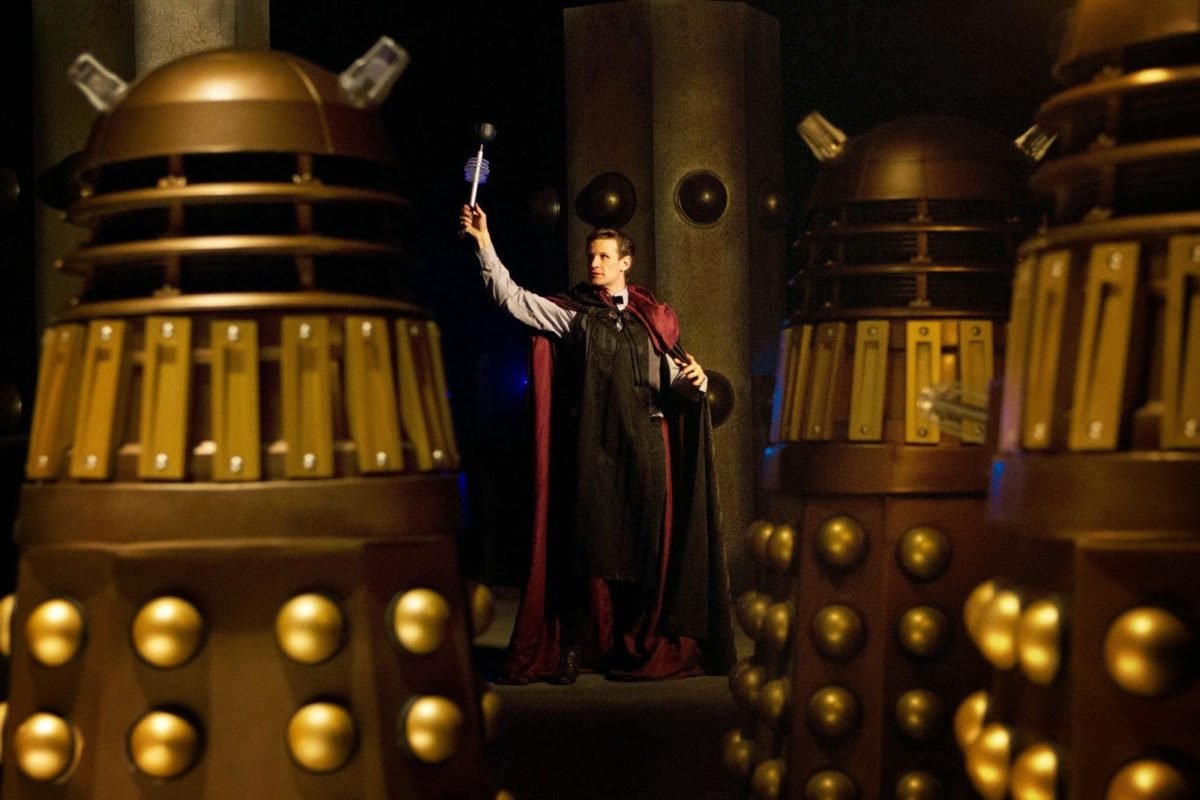
As with the episode preceding it, the Daleks aren’t the only antagonists in The Time of the Doctor, but the 2013 festive special is definitely a Dalek-centric story, as they’re there en masse, the most persistent aliens at the siege of Trenzalore.
It got a 30.7% share of the overall audience, its initial 8.3 million overnights rising significantly thanks to BARB counting those who recorded it and watched within a week of transmission. Most impressively, though, its 2.47 million stateside viewers beat the record set by The Day of the Doctor on BBC America – the highest ever audience figures for the channel.
Of course, the story also got a boost from the 50th anniversary, and for being Matt Smith’s last as the Eleventh Doctor, thus making it the second most watched programme of Christmas Day. The final scene, Matt’s regeneration into Peter Capaldi’s Twelfth, saw peak figures, however: the most watched scene on Christmas Day 2013. That was, truly, the time of the Doctor.
5. Day of the Daleks: 9.8 million.

(9.9m/ 10.6m/ 9.2m/ 9.5m)
The BBC production team sacrificed the Daleks’ surprise return for the sake of a Radio Times cover… and judging by viewing figures, it was worthwhile. Nevertheless, this was a great time for the show: The Daemons had concluded Season 8 with decent ratings (with a high of 9.2 million for Episode 1 and a low, the following week, of 8 million) and Season 9 mostly continued this trend.
Season 9 admittedly starts off well then trails off slightly with lower ratings for The Mutants and The Time Monster, but Day of the Daleks certainly pulled in viewers. The big hit for Season 9, though, is The Curse of Peladon, which got 11 million viewers for its second episode, then fell to 7.8 million for Episode 3 – a drop perhaps credited to national power cuts owing to coal miners’ striking – before recovering to 8.4 million for the concluding part.
6. Planet of the Daleks: 9.71 million.

(11m/ 10.7m/ 10.1m/ 8.3m/ 9.7m/ 8.5m)
As Doctor Who celebrated its 10th anniversary, ratings were considerable, but capricious. One week, the series would attract 10 to 11 million; the next, it’d drop to around 8 million. Both were nonetheless strong.
While it’s true that Planet of the Daleks was roughly in line with the other serials that year, it was an improvement on Frontier in Space (which, with its fourth episode, suffered a low of 7.1 million, and, with its sixth, enjoyed a high of 8.9 million) – a little awkward given that Frontier led directly into Planet. Sadly, viewing figures trailed off a little towards the end of the season (Katy Manning’s last regular adventure, The Green Death, got between 6.8 and 9.2 million viewers), Planet of the Daleks performed well, its 11 million debut only trumped by The Three Doctors Part 4, which held the attentions of 11.9 million First, Second, and Third Doctor fans.
7. The Stolen Earth/ Journey’s End: 9.67 million.

(8.78m/ 10.57m)
One of the best decisions Russell T Davies made during his time as showrunner was the aborted regeneration at the end of The Stolen Earth. This huge shock garnered mass media coverage meant more than 1.5 million more viewers tuned into Journey’s End to see whether David Tennant really was bowing out early (although it was always unlikely: his less-than-grand final words would’ve been “I’m sorry; it’s too late. I’m regenerating”).
It means the Series 4 finale, which packed in plenty of Dalek action, the return of Davros, and a plethora of companions, is the highest-rated Dalek story of the RTD era.
8. Genesis of the Daleks: 9.56 million.

(10.7m/ 10.5m/ 8.5m/ 8.8m/ 9.8m/ 9.1m)
Often held up as the greatest Dalek story ever – indeed, often named the greatest Doctor Who story ever – Genesis of the Daleks saw a mid-serial slump in ratings, from a high of 10.7 million to a low of 8.5 million. But figures recovered across its six-week run, increasing to 9.8 million for its fifth episode: not to be sniffed at.
And yet Genesis of the Daleks is one of the lowest performing serials in Season 12; only Revenge of the Cybermen had a lower average (9.02 million, with figures varying between 9.5 and 8.3 million).At this point, Doctor Who regularly drew in more than 10 million people. The first three episodes of Robot, Tom Baker’s first story as the Fourth Doctor; three episodes of The Ark in Space; and both instalments of The Sontaran Experiment got more than 10 million viewers. In fact, Part One of The Sontaran Experiment was seen by 11 million while the season-high is held by The Ark in Space Part 2, with 13.6 million.
Tom Baker’s Doctor Who was a success – so much so that his first season’s most acclaimed tale wasn’t that extraordinary in comparison to the ratings of its peers.
9. The Chase: 9.41 million.

(10m/ 9.5m/ 9m/ 9.5m/9m/ 9.5m)
The Daleks’ third appearance was their second in Season 2 and while The Chase didn’t prove as big a hit as The Dalek Invasion of Earth, it nonetheless achieved considerable figures. The lowest two of the six, achieving 9 million, were the wonderfully-named Flight Through Eternity and, proving that sensationalist titles don’t always draw in more viewers, The Death of Doctor Who.
Figures dwindled somewhat with the previous serial, The Space Museum (its 10.5 million beginning slowly falling, past The Dimensions of Time‘s 9.2 million, to 8.5 million for the last two parts of the serial. Then Season 2’s last story, The Time Meddler, waivered between 7.7 million (A Battle of Wits) and 8.9 million (The Watcher) – so The Chase still did well compared to its bookending tales.
10. Death to the Daleks: 9.4 million.

(8.1m/ 9.5m/ 10.5m/ 9.5m)
Jon Pertwee’s final outing opposite the Daleks didn’t see a massive surge in viewers. Curiously, the big hit of Season 11 was Invasion of the Dinosaurs, which, for its first and third episodes, gained 11 million (although its concluding episode dropped to 7.5 million).
Instead, Death to the Daleks had respectable ratings that slightly improved on the season’s opener, The Time Warrior, and were marginally better than the next adventure, The Monster of Peladon. Terrance Dicks’ and Barry Letts’ strategy to utilise the popularity of the Daleks (as this tale originally didn’t feature the pepper-pots at all) worked, albeit not as greatly as them shoving some dinosaurs on screen. That’s worth remembering at a time when Invasion of the Dinosaurs unfairly draws scorn from people who can’t see past dodgy models.
11. The Daleks’ Master Plan: 9.35 million.

(9.1m/ 9.8m/ 10.3m/ 9.5m/ 9.9m/ 9.1m/ 7.9m/ 9.6m/ 9.2m/ 9.5m/ 9.8m/ 8.6m)
William Hartnell’s last serial with the Daleks was seen by more than his first, but ranks lower than the previous season’s The Dalek Invasion of Earth and The Chase. Still, with a high of 10.3 million (Devil’s Planet), The Daleks’ Master Plan was roughly in line with the other Dalek tales of this era.
The real tragedy, of course, is The Feast of Steven, which, with 7.9 million, we can probably call the least-watched episode of Doctor Who ever – that is, because it was shown on Christmas Day 1965, it wasn’t sold abroad and its 405-line master videotape was the first Doctor Who to be junked by the BBC. Not such a merry Christmas after all…
12. The Daleks: 8.97 million.
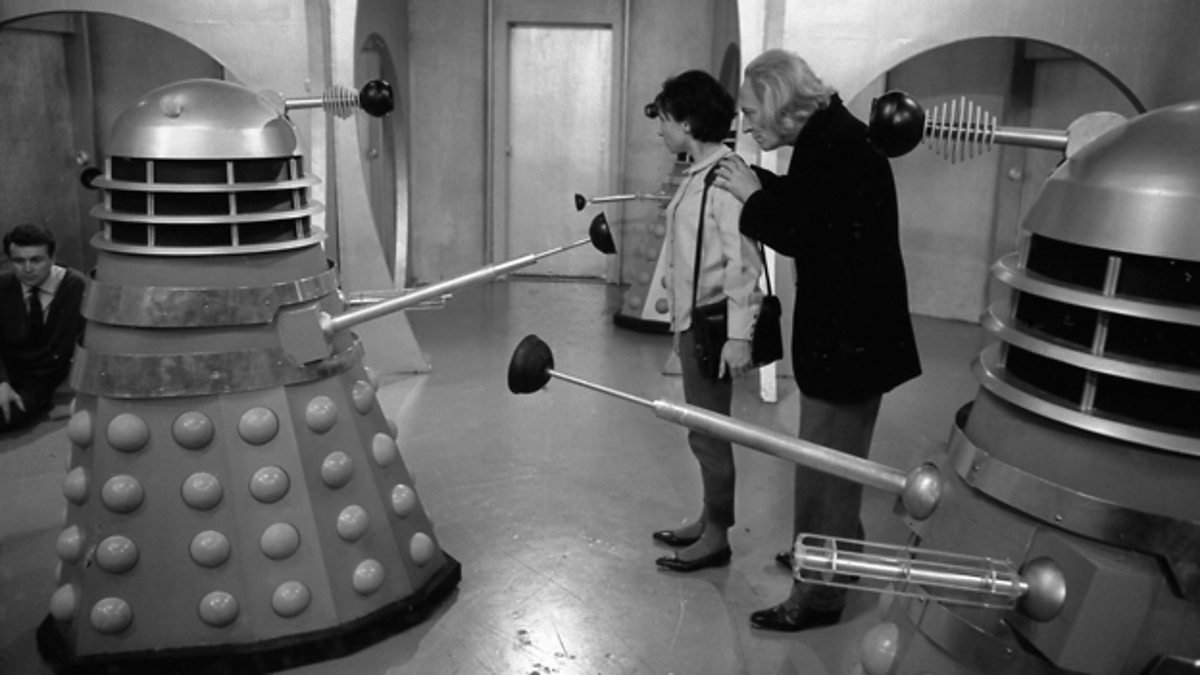
(6.9m/ 6.4m/ 8.9m/ 9.9m/ 9.9m/ 10.4/ 10.4m)
If you ever doubted the immediate appeal of the Daleks, you just need to check out the viewing figures for their first adventure. Word was spreading, and those screechy-voiced menaces on Skaro were a hit.
By the end of Doctor Who second serial, the show’s audience had increased by over 50%. An Unearthly Child had been seen by 4.4m on 23rd November 1963, but 5.9m tuned in for its subsequent repeat before The Cave of Skulls. The Forest of Fear achieved the serial’s high of 6.9m before The Firemaker dropped to 6.4m. That means The Escape was the first episode to break the 8m barrier, The Ambush over 9m, and The Ordeal 10m.
13. Dalek: 8.63 million.

Trumpeted with teaser trailers and an iconic Radio Times cover, the Daleks returned to exterminate the Ninth Doctor! Ish.
Okay, so only one Dalek featured in Robert Shearman’s superb tale, but its 8.63 million rating showed that, nearly 20 years after their last regular appearance, the Daleks were still a big draw. That’s because much of 2005’s Series 1 settled around the 7 million mark. There were pleasing spikes – The Unquiet Dead, The Long Game, and Father’s Day all rose above 8 million – but Dalek sits in the Top 3 of the series’ ratings (behind Rose‘s 10.81 million and The Unquiet Dead‘s 8.86 million).
14. Asylum of the Daleks: 8.33 million.
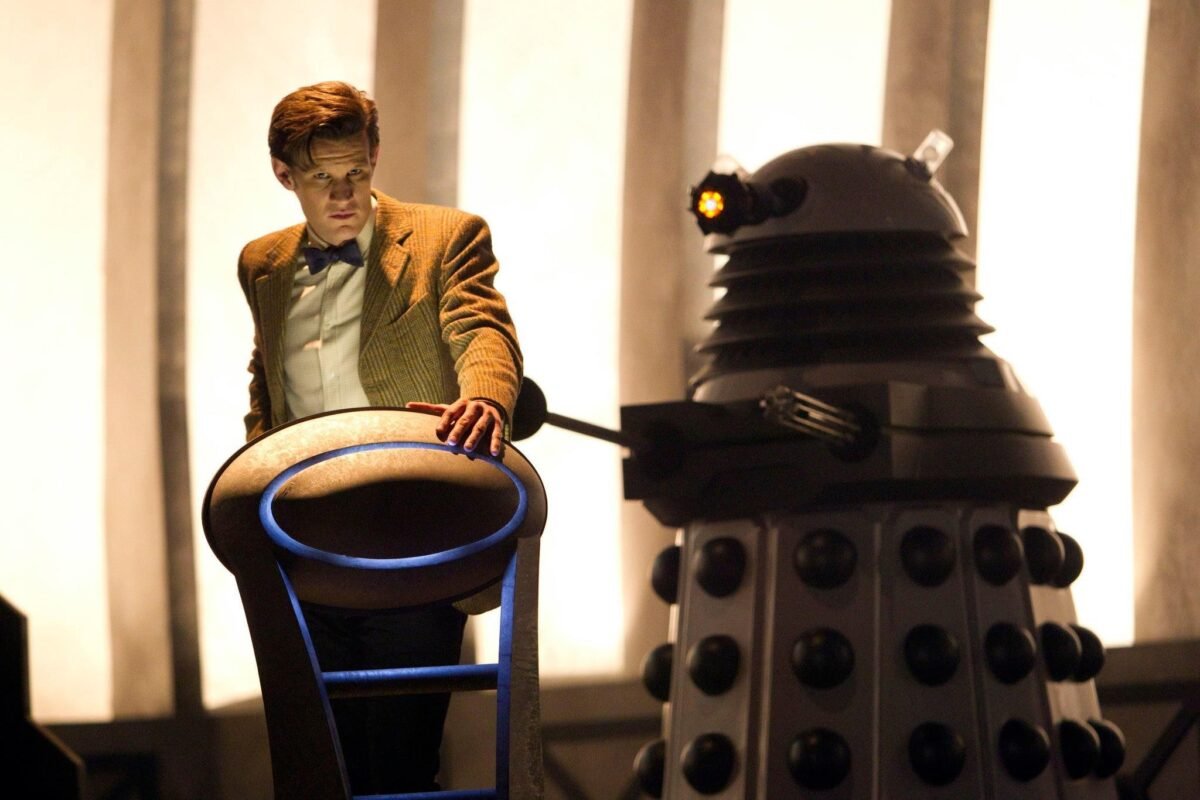
Overnights of 6.4 million viewers were worrying, making this Series 7 opener the lowest overnight figure for a premiere since Doctor Who returned in 2005. But by this stage, it was becoming increasingly clear that audiences were finding new ways to enjoy the programme (2.2 million requests on iPlayer made it the most-requested episode of the day), so the final figure of 8.33 million meant it ranked third for the whole week on BBC1.
Setting up plot strands that would gradually unfurl across 2012 and 2013, Asylum of the Daleks established a solid base, and the first half of Series 7 maintained strong ratings before a tiny dip below 7 million between Hide and Nightmare in Silver.
15. Mission to the Unknown: 8.3 million.

The only Doctor Who serial (not episode) not to feature new footage of the Doctor gained over 8 million viewers – not bad at all considering some publicity material called it The Beasts From UGH. Would the story have done better if it were publicised as Dalek Cutaway? It’s academic, of course, but it’s curious to think that the preceding Galaxy 4 got between 9 and 11.3 million viewers, so this Dalek adventure saw such a decrease.
As this is one of only three broadcast stories which exist solely as audio recordings (alongside Marco Polo and The Massacre of St. Bartholomew’s Eve), it’s a shame that only 8.3 million watched on transmission. Especially as every episode of The Daleks’ Master Plan, except The Feast of Steven, got higher ratings than Mission to the Unknown, which acted as its prelude.
Still, at least we can watch the superb remake by students at the University of Central Lancashire.
16. Victory of the Daleks: 8.21 million.

Series 5 maintained solid ratings for much of its first half, starting out at 10.09 million, falling to 8.42 million for The Beast Below, then sliding to 8.21 million for the Eleventh Doctor’s first battle with the Daleks. The next two episodes had a slight increase, no doubt because the return of the Weeping Angels was an especially exciting prospect.
Nevertheless, fears about ratings once David Tennant and Russell T Davies moved on proved unfounded, as Matt Smith and Steven Moffat’s debut series brought in enviable figures. While the Paradigm Daleks didn’t leave such a great impression (although I personally love them), the series still felt very fresh and exciting, demonstrating to doubters that there was life beyond Davies.
17. Army of Ghosts/ Doomsday: 8.2 million.
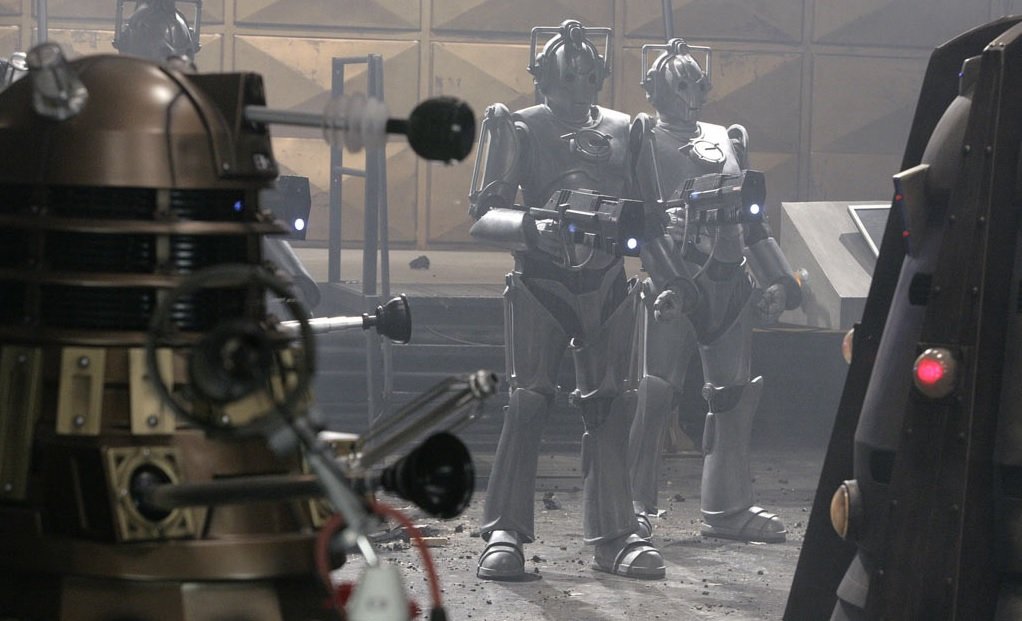
(8.19m/ 8.22m)
Cybermen! Daleks! Rose leaving the TARDIS! Yep, the Series 2 finale had a lot going for it. But were the Daleks really such a draw? There was only a slight increase in figures between episodes, and the Daleks were only revealed in the cliffhanger of Army of Ghosts so few knew they’d be in Doomsday… although the Next Time trailer for the former episode did feature people dying with the familiar extermination effect – maybe some guessed?
Either way, these are good figures, no doubt partly a result of audiences tuning in to see how Rose, the character many fell in love with when Doctor Who first returned, finally departed. Well, maybe not so “finally”.
18. The Power of the Daleks: 7.8 million.
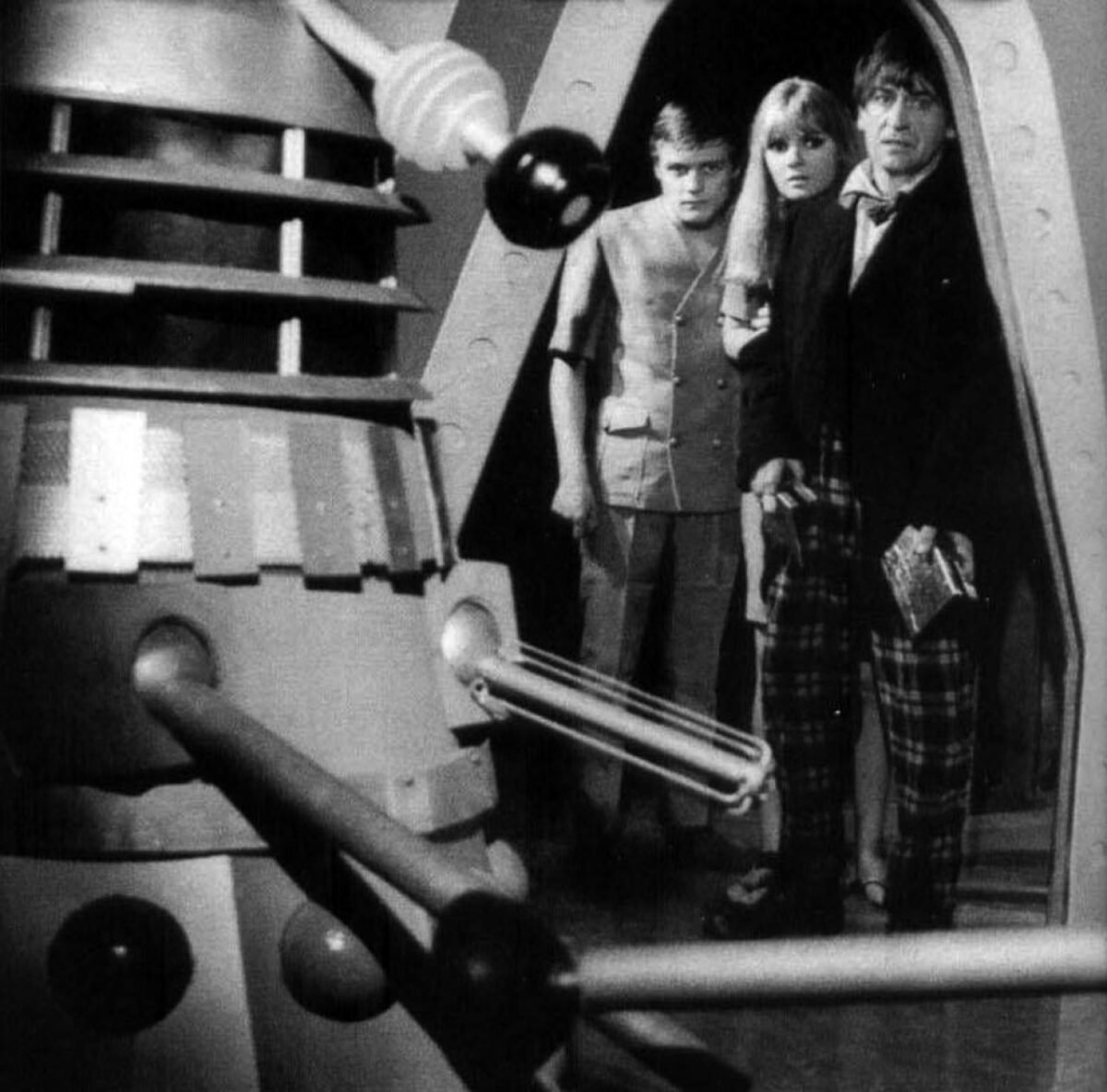
(7.9m/ 7.8m/ 7.5m/ 7.8m/ 8m/ 7.8m)
The Power of the Daleks is the first Dalek story to drop below 8 million on a regular basis.
Indeed, only its fifth part achieved 8 million viewers, which we might now think a curiosity as this was also the first Second Doctor adventure. Nowadays, the first post-regeneration episode would see a considerable bump in figures as people tune in to see what the new lead actor is like. The Power of the Daleks did see an increase, but it’s slight: Hartnell’s final episode, the fourth part of The Tenth Planet, was seen by 7.5 million, strangely lower than the previous episode’s 7.6 million (but higher than the tale’s first part, which attracted 5.5 million).
But 7.9 million for Patrick Troughton’s debut episode is certainly not to be sniffed at!
19. Resurrection of the Daleks: 7.65 million.

(7.3m/ 8m)
In his final season as the Fifth Doctor, Peter Davison finally got to face off against the Daleks. This proved a slight ratings boost compared to the previous stories of Season 21, Warriors of the Deep (with an average 7.25 million), The Awakening (averaging 7.25 million too), and Frontios (9.06 million). Those averages don’t show the full picture: Frontios‘ figures varied wildly, dropping from 8 million to 5.6 million by the end of its four-episode run.
Resurrection of the Daleks did respectably well – this was the last Fifth Doctor story to achieve 8 million viewers. Season 22’s opening episode, Attack of the Cybermen Part 1, achieved higher (8.9 million), but otherwise, Resurrection of the Daleks was the last Dalek story until 2005’s Dalek to achieve such a high figure. (In fact, Resurrection of the Daleks Part 2 and Attack of the Cybermen Part 1 were the last to get 8 million or more until the 1996 TV Movie.)
20. Revelation of the Daleks: 7.55 million.

(7.4m/ 7.7m)
Yes, Attack of the Cybermen did remarkably well (perhaps as fans tuned in to see what “the new guy”, Colin Baker, was like against another classic monster), but Revelation of the Daleks finished Season 22 on a high. 7.7 million is a decent figure, if not quite as amazing as Dalek stories in their 1960s and 1970s heydays.
Season 22 batted between 6 million (The Two Doctors Part 2) and Attack‘s 8.9 million, but otherwise regularly got 6 to 7 million viewers. This Dalek story saw off the run in style; sadly, Doctor Who didn’t break the 7 million barrier again until 1996.
21. Into the Dalek: 7.29 million.
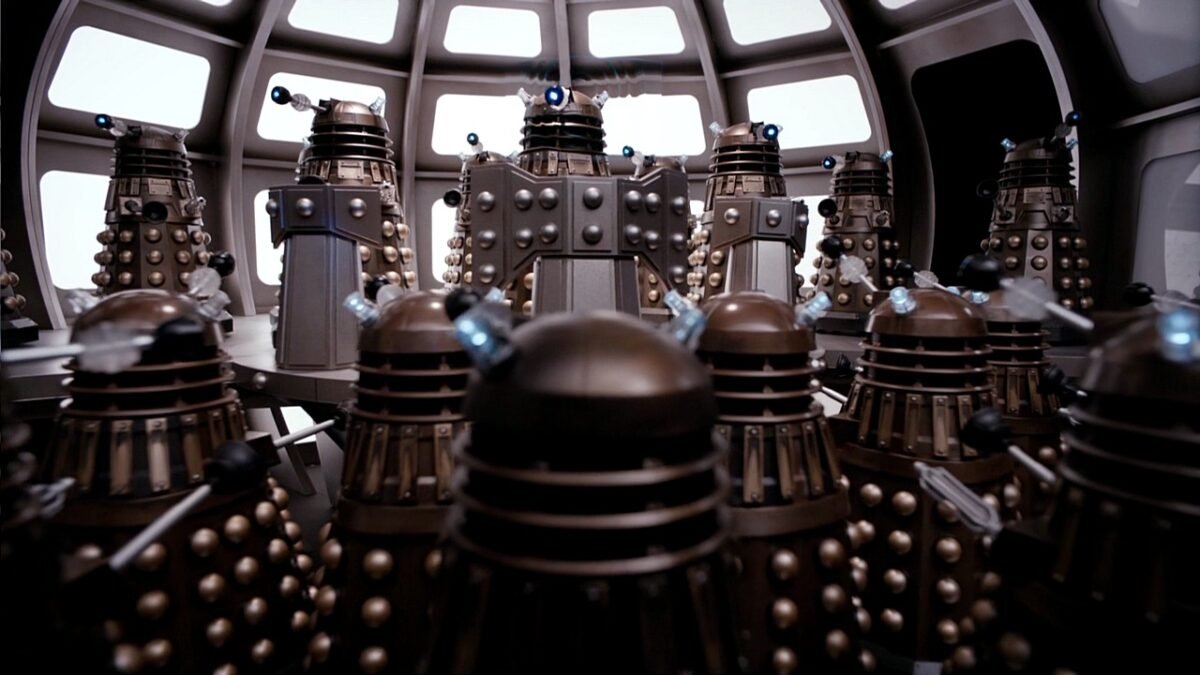
Peter Capaldi’s second episode as the Twelfth Doctor saw him and companion, Clara Oswald (Jenna Coleman), miniaturised and entering a damaged Dalek. Fans were initially concerned about the miniature viewing figures too – just 5.2 million tuned in on 30th August 2014 to watch Into the Dalek‘s transmission.
But there’s an argument to be had that this is the first Dalek serial to be majorly affected by the gradual audience shift to streaming services. Because even though the overnights felt underwhelming, based on these alone, it was the second-highest rated programme of the night, and final ratings made it the second highest on BBC1 across the whole week. Certainly not the failure the overnights (and the tabloids) would have you believe.
Fact fans might like to know that “Rusty” the Dalek’s second appearance, in Twice Upon A Time, brought in 7.92 million viewers, so would slot between Army of Ghosts/ Doomsday and The Power of the Daleks in this list if we had counted it as a full-on Dalek encounter. It’s also an oddly pleasing coincidence that Twice Upon A Time‘s 7.92 swaps the last digits of Into the Dalek‘s 7.29.
22. The Pandorica Opens/ The Big Bang: 7.13 million.

(7.57m/ 6.70m)
This isn’t strictly a Dalek story, but they do play a considerable enough role to warrant an inclusion here. Or at least, one does. As part of the Alliance, the Daleks trap the Doctor inside the Pandorica, and then a sole Dalek is revived to act as the main antagonist in The Big Bang. This was Steven Moffat doing something different with the series finale, but paying lip service to all those Davies-era conclusions boasting Skaro’s finest.
The Lodger has Series 5’s lowest figure (6.44 million). Still, The Big Bang‘s 6.7 million feels unusually, and unfairly, low. Fortunately, ratings would see an increase again throughout Series 6 (with a huge 12.11 million for the very next episode, A Christmas Carol).
= Resolution: 7.13 million.

Jodie Whittaker’s first full festive special, and Doctor Who‘s first New Year’s Day bonanza, brought back a single member of the irradiated race in the form of the Reconnaissance Dalek, following a whole series without any returning classic monsters. It should’ve been a ratings winner – and it was!
Yes, it’s the lowest achieved by a festive special, but New Year’s Day is a very different beast to Christmas Day. It was a boost after the Series 11 finale, The Battle of Ranskoor Av Kolos, which drew in 6.65 million, and the penultimate episode, It Takes You Away, which had a series low of 6.42 million. Even that series slump is impressive, though, and it’s nice to see Resolution grabbing a fair 26.6% audience share.
For the first time, the 7.13 million figure is a +4 screens figure, i.e. counting those who watched it live, on iPlayer, through recordings, and on repeat showings via all platforms within a week or so of initial airing. The same is true of Revolution of the Daleks.
24. Bad Wolf/ The Parting of the Ways: 6.86 million.

(6.81m/ 6.91m)
Everything looked promising for the Series 1 finale in 2005. Rose launched with 10.81 million, the run maintained solid ratings throughout, and Dalek saw an uptick too. For this two-parter, the Daleks were back and the Ninth Doctor was to regenerate!
So it’s quite a curiosity that Bad Wolf/ The Parting of the Ways dropped below 7 million, Boom Town enjoying 7.68 million. (Bad Wolf would be the lowest figure until The Idiot’s Lantern‘s 6.76m.) This was, at least, in contrast to the AI figures for the story, which rose to a series high of 86 then an astonishing 89.
25. Daleks in Manhattan/ Evolution of the Daleks: 6.83 million.
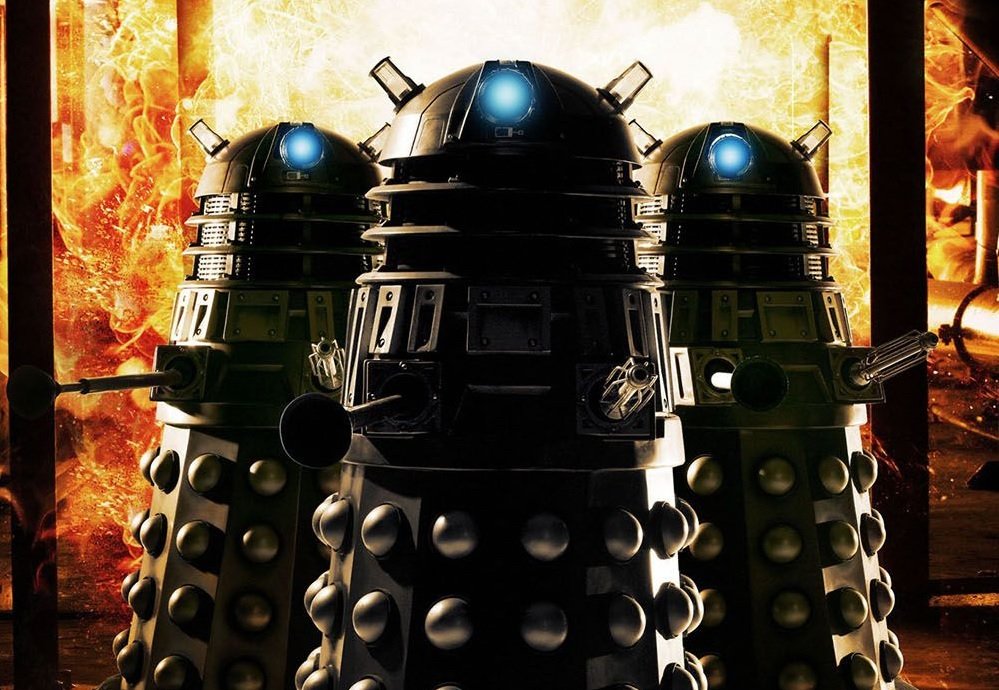
(6.69m/ 6.97m)
We’re used to a mid-series lump in ratings, so Russell T Davies seemingly made a canny move not only bringing the Daleks back for episodes 4 and 5 of Series 3, but also allowing the Radio Times to ruin the reveal of the new Dalek Sec human hybrid on its cover. Yet these decisions didn’t reflect that well in the ratings.
These were two of only three episodes in Series 3 to drop below the 7 million mark (the other being the acclaimed Blink, which got a series low of 6.62 million), and was the lowest Dalek serial of 21st Century Who up until that point. A real oddity, seeing as, at this point, Doctor Who was really flying high.
26. The Evil of the Daleks: 6.42 million.
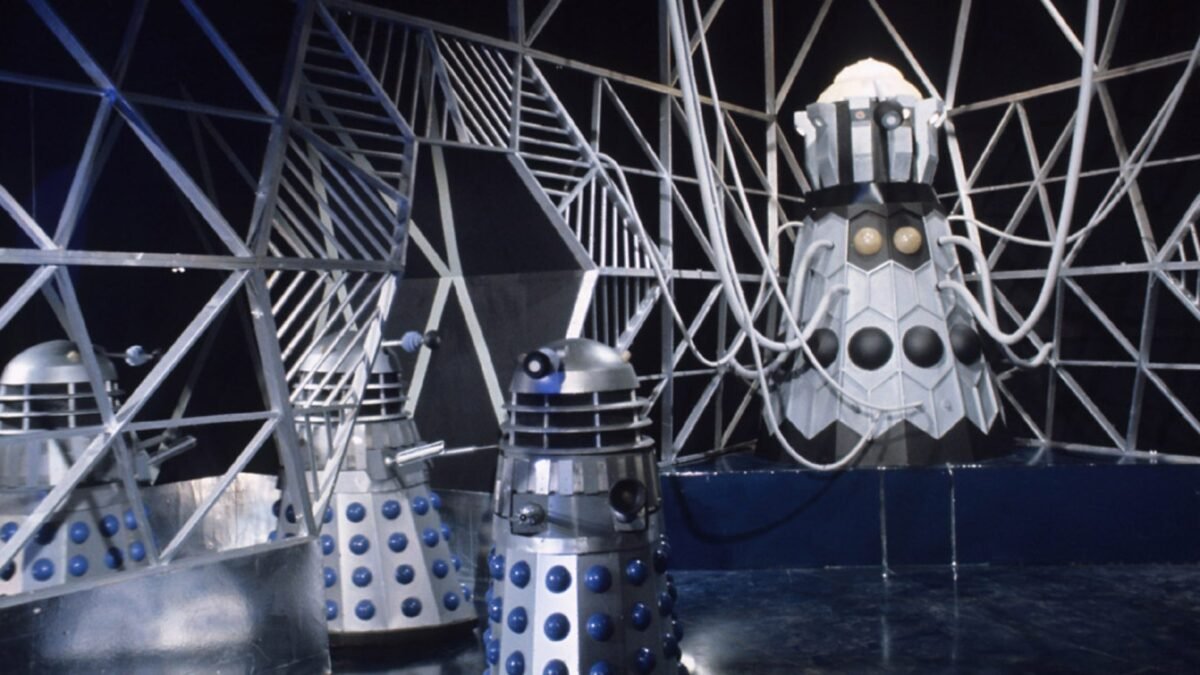
(8.1m/ 7.5m/ 6.1m/ 5.3m/ 5.1m/ 6.8m/ 6.1m)
Were the Daleks experiencing the law of diminishing returns for the first time? The Evil of the Daleks, coming soon after The Power of the Daleks, saw large discrepancies in viewers. Episode 1 had a high of 8.1 million, whereas only 5.1 million saw Episode 5. This rose to 6.8 million the following week then slumped to 6.1 million for its seventh part… which seems odd, as it was also Season 4’s finale.
Fortunately, The Evil of the Daleks was also the first Doctor Who to be repeated in its entirety, filling the gap between Seasons 5 and 6, and giving fans another chance to see the Daleks. This was going to be the Daleks’ “final end” in Doctor Who if Terry Nation’s plans to create a spin-off had gone ahead. Naturally, with hindsight, we know this never occurred so the Daleks would be back for Day of the Daleks in 1972, so we know they’d bounce back.
27. Revolution of the Daleks: 6.35 million.

Let’s not beat around the bush: Series 12 ratings weren’t as strong as many would hope. The Timeless Children, the season finale which aired on 1st March 2020, drew in 4.69 million, the lowest figure of 21st Century Doctor Who. That meant that Revolution of the Daleks had serious ground to retake.
It did so by bringing back Captain Jack Harkness, putting the Daleks front and centre, and promising an emotional farewell for companions, Graham O’Brien and Ryan Sinclair. Its overnights were the same as The Timeless Children‘s consolidated figure, so that was an immediately positive sign. Consolidated figures of 6.25 million came in, then was topped up to 6.35 million when +4 screen ratings were further added for those who watched within a week (which seems fair considering other ratings only take the next seven days into account; otherwise, if we add in those who watched within 28 days, the rating would rise to 6.45 million).
It was the highest figure since Spyfall: Part One, which aired on 1st January 2020, exactly a year beforehand, so perhaps the Thirteenth Doctor era is crawling back up the charts.
28. The Magician’s Apprentice/ The Witch’s Familiar: 6.12 million.
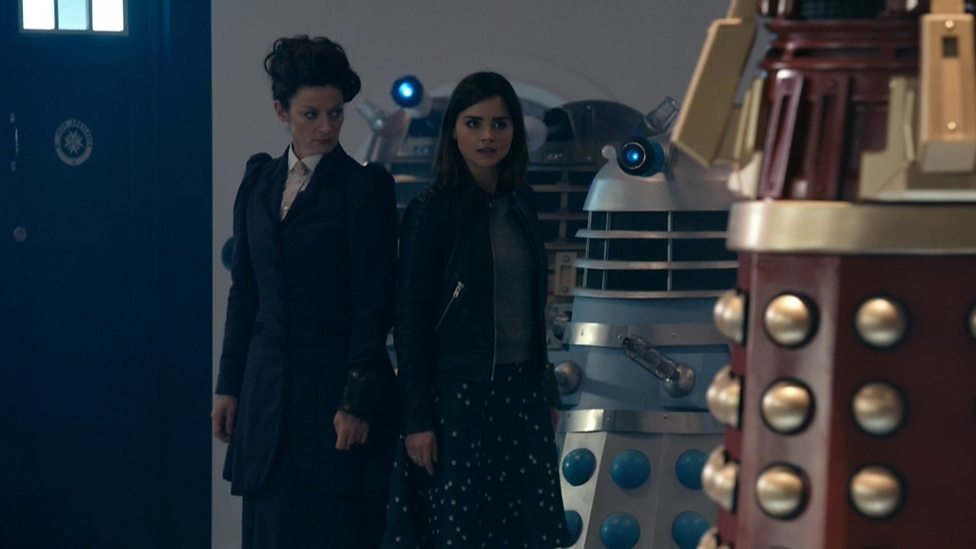
(6.54m/ 5.71m)
Things weren’t looking too great when the Series 9 opener aired and got overnights of just 4.58 million – the lowest for a season premiere since the show returned in 2005 – and that disappointment intensified when The Witch’s Familiar attracted to 3.71 million (perhaps due to a Rugby World Cup match screening on ITV).
But who cares about overnights anyway? The ratings increased substantially in the consolidated figures, and while they weren’t as impressive as any previous series, they did establish a decent level: Series 9 maintained similar ratings across the 12-episode run. The low point was Sleep No More‘s 5.61 million, and the high was 6.56 million for The Girl Who Died.
Yes, the Daleks no doubt drew people in, but it’s worth noting that the plot strands set up in The Magician’s Apprentice/ The Witch’s Familiar were enough to bring the audience back each week.
29. Remembrance of the Daleks: 5.35 million.

(5.5m/ 5.8m/ 5.1m/ 5m)
Sadly, we find Remembrance of the Daleks, arguably one of the best Doctor Who serials – certainly one of the most celebrated of the Seventh Doctor era – at the bottom of the list. Still, its 5.35 million average isn’t that bad, and 5.5 million was a good start to Season 25.
These figures are basically in line with those attained in Season 24 and much better than the 3.10 million who tuned in for Season 26’s opening episode, Battlefield. Indeed, only two episodes of the following season matched Remembrance‘s lowest figure of 5 million (those being the first and third part of Survival). Doctor Who wasn’t in rude health, but these aren’t bad figures. The biggest ratings successes of Season 25 were Part 1 of Silver Nemesis (6.10 million) and Part 4 of The Greatest Show in the Galaxy (6.60 million).
Remembrance of the Daleks at least remains a much-loved classic and had a great influence on spin-off media including Big Finish and Candy Jar’s Lethbridge-Stewart range.
So there we are: from Destiny of the Daleks to Remembrance of the Daleks, The Day of the Doctor to The Magician’s Apprentice/ The Witch’s Familiar, and everything in between.
You can read more about ratings, including the most- and least-watched serials for each Doctor, in 100 Objects of Dr Who.



